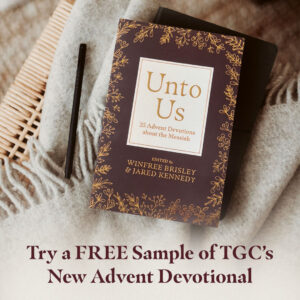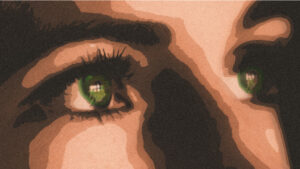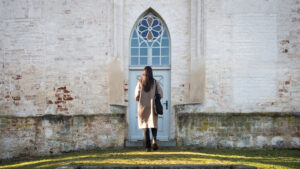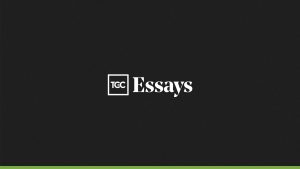For a film that explores multiple dimensions of time and space, A Wrinkle in Time is disappointingly flat. I have no sentimental attachment to the book: I read it as an adult, so I have no childhood nostalgia to make the changes from page to screen more painful. But the general flattening felt like a loss.
First, I’ll tell you what I liked.
Intentional Diversity
I liked the decision to place the central character, Meg (Storm Reid), in an interracial family. A film centered on a girl with a black mother and a white father (both scientists) and an adopted brother offers a helpful lens through which to access an imaginatively complex story. The choice to give Mrs. Whatsit (Reese Witherspoon), Mrs. Who (Mindy Kaling), and Mrs. Which (Oprah Winfrey) different racial backgrounds—at least in their human incarnations—also added an interesting dimension to what could have been a racially monochrome film. As Christians, we should be the first to celebrate racial diversity (including director Ava DuVernay [Selma, 13th]—the first black woman to direct a film with a budget more than $100 million), as well as the beauty of adoption.
Blending Science, Fantasy, Art
One of the strengths of Madeleine L’Engle’s classic book is her integration of science and artistic fantasy. The film is visually engaging and lends color—literally—to this connection. For adults, the aesthetic may be slightly psychedelic, but it dazzles kids with the full Disney palette and doesn’t ask them to choose between being interested in science and interested in art. Again, this is a Christian good: our God is the ultimate scientist and artist, so our faith gives us connective tissue between all areas of thought. We can explore all dimensions of creativity and discovery as image-bearers of a creative God.
Our God is the ultimate scientist and artist, so our faith gives us connective tissue between all areas of thought. We can explore all dimensions of creativity and discovery as image-bearers of our creative God.
Eradicating Christianity
Unfortunately, this is where my commendations end.
L’Engle’s book draws deeply from Christian Scripture. To be sure, its implied theology is not always orthodox. Halfway through the book, Mrs. Whatsit explains that all through the universe, a battle is being waged against the powers of darkness, and that some of the best fighters for good have come from planet Earth. Always tending toward quotation, she concludes, “And light shineth in darkness; and the darkness comprehended it not.” Charles Wallace (who chooses Genesis as his bedtime story) voices what every biblically literate reader is thinking: “Jesus! Why, of course, Jesus!” Mrs. Whatsit agrees: “Of course!” But she encourages him to go on. Calvin, Charles Wallace, and Meg name other human luminaries, and Calvin includes “Gandhi and Buddha” in his list. Jesus is first, to be sure, but he is first among many, giving the book a gentle backdrop of religious relativism.
And yet, at other times, characters quote stunning biblical passages in all their glory. For example, when Meg is preparing to return to Camazotz to try to rescue her baby brother, Mrs. Who says:
What I have to give you this time you must try to understand not word by word, but in a flash, the way you understand the tesseract. Listen, Meg. Listen well. The foolishness of God is wiser than men; and the weakness of God is stronger than men. For ye see your calling, brethren, how that not many wise men after the flesh, not many mighty, not many noble, are called, but God hath chosen the foolish things of the world to confound the wise; and God hath chosen the weak things of the world to confound the things which are mighty. And base things of the world, and things which are despised, hath God chosen, yea, and things which are not, to bring to nought things that are. (1 Cor. 1:25–28)
Likewise, when Meg asks the strange but loving alien Aunt Beast whether she and those like her are also fighting the evil of IT, she receives this response, which echoes Romans 8:30:
“Oh yes,” Aunt Beast replied. “In doing that we can never relax. We are called according to his purpose, and whom he calls, them he also justifies.”
In the film, while Buddha is quoted, as is the Muslim poet Rumi, Christian Scripture is avoided like the plague. When the line about many fighters-for-good coming from Earth finally crops up (far later in the narrative than in the book), Jesus is conspicuously absent.
Perhaps the screenwriters thought abandoning Jesus would be less off-putting to Christians than listing him as first among many, or maybe they simply wanted to reject the book’s Christian dimension. But to anyone who has read L’Engle, the silence is deafening. Among other things, this ripping out of Christian references undermines some of the film’s potential to connect with the black American experience, as African Americans are more likely than their white peers to identify as Christians.
Flattening Language
A persistent feature of L’Engle’s book is her use of foreign language quotation. Characters quote in Latin, Greek, French, German, Spanish, and more, and many lines have ancient origins. Quotations are always restated in English, but they whet the young reader’s appetite to learn other tongues.
The film cuts most of these quotes and expunges languages other than English. Thus another dimension of the book is flattened out, and this flattening is particularly ironic. While the film seeks to extract the Western-culture roots of the book, it ultimately makes the tale more Anglo-centric by removing other languages. Likewise, while the movie delights in engaging young viewers with scientific concepts, it refuses to challenge them by exposure to non-English words.
Flattening Meg
In both the book and the film, Mrs. Whatsit equips Meg to resist the evil IT with the gift of her faults. But while the Meg of the book is a messy character—stubborn, impulsive, hot-tempered, chaotic—the Meg of the film is a strangely flat. To be sure, she throws a basketball at a bully in school, but even this is controlled and non-explosive. The Meg of the film is more calculating than passionate. And while she ultimately wrestles Charles Wallace (Deric McCabe) from the IT with the power of her love, she doesn’t really deploy her untidy characteristics: “Anger, impatience, stubbornness.”
The entire episode between her father’s tessering her and Calvin away from Charles Wallace, and Meg’s return to save him, is cut. This leaves minimal space for Meg’s furious disappointment with her father, who abandoned Charles Wallace on Camazotz, seems in no hurry to go back, and cannot assume the savior role in which Meg has cast him.
We also lose a dimension of Meg’s own ability. We see her using her mathematical skill, but we lose her key moment of ethical reasoning. At a pivotal moment in the book, Meg argues against IT that uniformity and justice are not equivalent: “Like and equal are not the same thing at all!” Again, this loss is ironic, given the film’s attempt to lean into diversity and create space for difference.
Empowering or Patronizing?
At one point in the book, Mrs. Who accidentally brings the children to a two-dimensional place. The film (which cuts this scene) flattens the book in ways that will cause readers familiar with L’Engle’s book to experience that same two-dimensional squeeze.
The movie aims at an empowering message for self-doubting misfits, and perhaps it achieves that goal. But in some sense it also patronizes the young, as universe-threatening evil is reduced to the concerns of teenage angst—important, sure, but not on the scale of a totalitarian regime, as evoked by L’Engle’s Camazotz. Worst of all, the flattening of the narrative allows that great rot of the mind to creep in. For most of the film, I was simply bored.
Having said all this, I saw the film with my 7-year-old daughter, who had not read the book, and she loved it: “9.75 out of 10!” It has stimulated some rich conversations between us, and she is now devouring the book. Perhaps, for the experience of this film, ignorance is bliss, and it’s up to us parents, uncles, and aunts (biological or otherwise) to unleash the lost dimensions.
Try Before You Buy: FREE Sample of TGC’s New Advent Devotional

Choosing the right Advent daily devotional can be tough when there are so many options. We want to make it easier for you by giving you a FREE sample of TGC’s brand-new Advent devotional today.
Unto Us is designed to help you ponder the many meanings of this season. Written by TGC staff, it offers daily Scripture readings, reflections, and questions to ponder. We’ll send you a free sample of the first five days so you can try it out before purchasing it for yourself or your church.
































